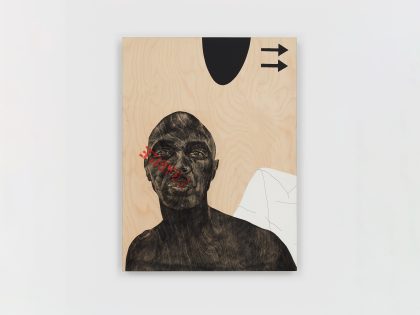The Contemporary Mark of Assata Shakur
The Black American activist's relevance for today's generation following the killing of Mike Brown by police, and the suppression of protests in Ferguson, Missouri.

Despite repeated attempts by the U.S. government to “neutralise” her, Assata Shakur remains a powerful voice for the perennial voiceless throughout the world. Now considered to be the most wanted woman alive, her recent inclusion on the FBI’s Most Wanted Terrorists list reflects her status as one of the few cointelpro targets to evade life imprisonment, or death at the hands of the state. However, today’s activists who continue to fight the unresolved issues that she faced 40 years ago now also find themselves caught in the same crosshairs. Assata: An Autobiography by Shakur, republished this summer, underlines the extent to which she was targeted by the secret services as a leader of the Black Liberation Movement. As explained by Angela Davis, the latest move to now brand Assata as a terrorist is itself a reflection of terrorism, as it has clearly been intended to intimidate the next generation of activists into compliance.
This is a salient point, as Assata’s influence across the globe continues to be both pervasive and inter-generational, and this reality poses a real threat to the establishment. For example, following the unsolved murder of Tupac Shakur, persistent rumours spread like wildfire that he had somehow evaded the authorities to seek political asylum in Cuba alongside his “auntie” Assata. Although this urban legend has grown to the extent that Obama’s speechwriters and CIA propagandists now “playfully” reference it, Assata’s real-life escape from the United States has always made the prospect of Tupac “sipping daiquiris” in self-imposed exile seem plausible, and this in itself highlights her continued relevance.
Within contemporary hip hop culture, even the most apolitical of listeners is familiar with the historical struggle that underpins Tupac’s misappropriated and misunderstood concept of “T.H.U.G L.I.F.E”. As one of the most notorious figures of that era still breathing, Assata’s political legacy provides an ideological link between the potential activists of today and black liberation leaders of the past, like Tupac’s mother Afeni Shakur, his step-father Mutulu Shakur, and his godfather Geronimo Ji Jaga. With this in mind, by branding Assata a “domestic terrorist” and placing a $2 million bounty on her head, the FBI are essentially sending a veiled threat to anyone who believes that real hip hop culture is an informed movement of the masses.
As an advocate for the power of hip hop and a self-described “runaway slave,” Assata has never compromised her message. In her own oft-quoted words, the civil rights movement never had a chance of succeeding, as “nobody in the world, nobody in history, has ever gotten their freedom by appealing to the moral sense of the people who were oppressing them”. Without doubt, institutional racism, structural inequality and the prison industrial complex are all still in existence today, and as disenfranchised people experience their own awakening to these facts, it is understandable that many eventually gravitate towards Assata’s politics.
But having said that, it’s imperative that her personal journey towards self-empowerment is never lost in the shadow of her legacy. After all, there was a time when the main pages that Assata read in the newspapers were the comic strips and the horoscopes! Even when she first began questioning the plight of her community as a young college student, she still believed the propaganda that U.S. military intervention in Vietnam was a humanitarian effort to spread democracy. As she herself reveals her autobiography, her first realisation of how brainwashed she really was left her feeling like a “bona fide clown”, and this marked the beginning of a new chapter in her life.
Arguably, it’s just as important for young activists today to accept Assata’s early naivety as it is to learn about her later militancy. The soul-searching and self-reflection that she shares in her autobiography acts as a much-needed mirror held up to the lives of her readers. How else can we grasp the urgency of her message unless we use her example to first admit our own shortcomings? In many ways, acknowledging her ultimate transformation from Joanne Chesimard to Assata Shakur is just as fundamental as following the well-trodden journey of Malcolm Little from street hustler to Malik El Shabazz, as revealed in his autobiography.
Tellingly, this natural evolution from disenfranchised apathy to self-empowered activism that we are all invited to make is the exact process that the establishment seek to attack by placing a $2 million bounty on Assata’s head.
But herein lies the real issue – in our own way, we are all Joanne Chesimard.
After all, how many people are incensed by the systematic injustice evident in the world today? How many of us are in a position to take steps – no matter how small – to right these wrongs?
To be clear, suggesting that we are all Assata is not simply an acknowledgement of our collective subjection to an oppressive world order. Nor is it merely a nod to the “Assata Shakur Is Welcome Here” posters that plastered black communities across the United States and beyond when she first escaped from prison in 1979.
Instead, it is a humble declaration of understanding and solidarity. Long before Chelsea Manning and Edward Snowden were even born, Joanne was an unlikely hero who sought out the truth and became a government target for her newfound principles.
In the five years prior to joining the Black Panther Party, she was a student and local activist who became gradually politicised by the murders of Malcolm X, MLK Jr, Bobby Hutton, Fred Hampton, Mark Clark and many other innocent activists. Throughout that time, the official objective of the FBI was to prevent the rise of a “black messiah” capable of leading Black America and the Diaspora towards self determination.
When she was finally arrested as a founding member of the Black Liberation Army in 1973, she was shot twice while surrendering with her hands above her head, and left for dead. She then spent the next four years in custody awaiting trial – two of which were spent in solitary confinement in a men’s prison – before being wrongly convicted for murder and sentenced to life imprisonment plus 33 years. After being liberated from prison two years into her sentence, she went on the run for five years and resurfaced in Cuba as a political refugee in 1984. She has remained on the island ever since as the most wanted woman in the world.
With the benefit of hindsight, perhaps the question you should all be asking yourself now is, if you really were Joanne Chesimard in the mid-1960s, would you have ever dared to take the fateful steps to become Assata Shakur?
To mark the occasion of the summer re-print of Assata Shakur’s Autobiography, Zed Books offered up a nice playlist of rap songs that illustrate the intimate connection between the activist and hip hop culture:



















